Fear aggression is one of the most common causes of aggression in dogs. It may also play a role in other aggressive behaviour types, such as owner-directed or possessive and territorial aggression.
Fear aggression in dogs is a treatable problem if we understand why the dog is aggressive and commit to a behaviour modification plan by a behaviour professional that decreases the dog’s anxiety.
Not all dog aggression is related to malice, trained behaviours, or instincts; some canine aggression is due to fear.
What Is Fear Aggression In Dogs?
Fear aggression in dogs is a type of self-defence directed towards people, animals, or objects. When dogs sense a threat, they may use specific body language or behaviours to deter it and increase the distance between themselves and the perceived danger.
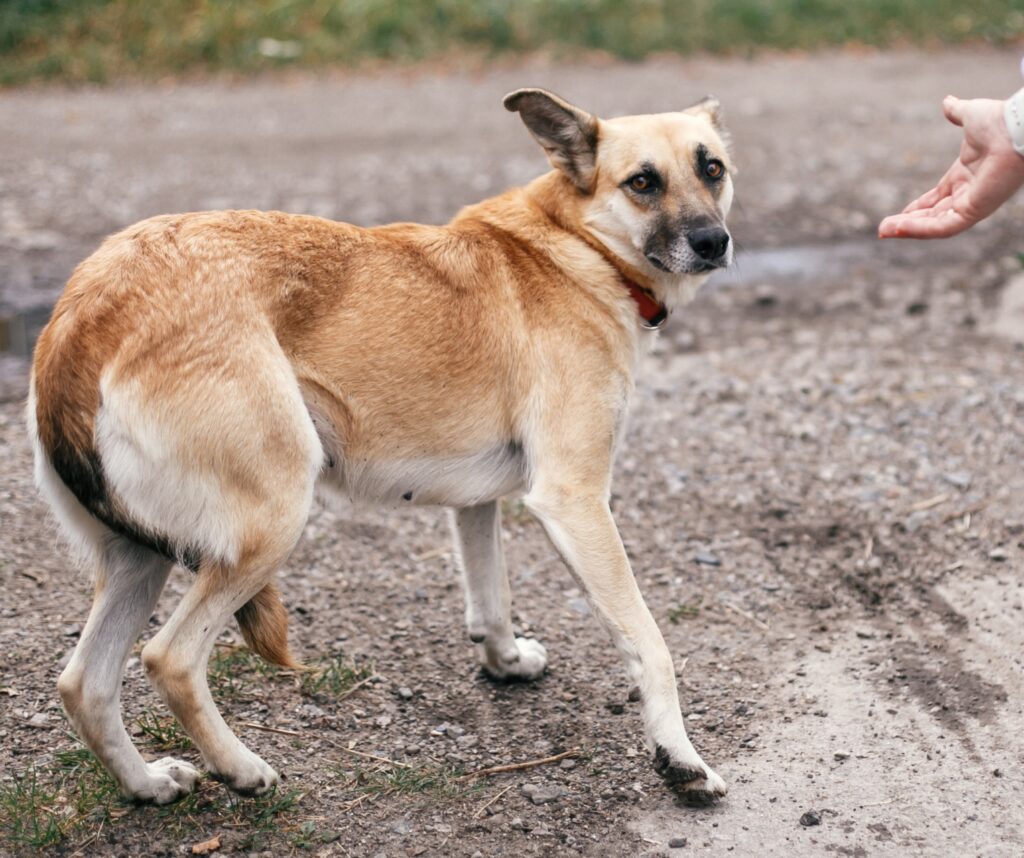
When a dog is defensive, they typically won’t become aggressive unless directly approached or touched. But when a dog has prior negative experiences where they couldn’t escape the threat, they may exhibit offensive fear aggression, moving toward the trigger and exhibiting threatening and aggressive behaviour.
Fear aggression can be normal behaviour in certain situations. For instance, if an unfamiliar dog suddenly wakes up a sleeping dog, barking and growling is a reasonable response to the intrusion. Similarly, if a human family member or visitor tries to pet a sleeping dog, the dog may show a similar response. This response can be frightening, but it is important to note that the dog is reacting aggressively because they feel threatened and fearful, regardless of who disturbs them.
Common stimuli that can trigger a fear-based aggressive reaction in dogs
- Strangers reaching toward their head
- Another dog or a person making direct eye contact
- Having their nails trimmed
- Having their ears plucked
- Having their ears cleaned
- Being bathed
- Being shaved
- Being approached or petted when they are lying down
- Being hugged
- Getting a needle injection
- Being restrained by a stranger
- Having their fur grabbed
- Being touched in a sensitive area, such as their tail, paws, or belly
To effectively treat fear-aggressive behaviour, it is important to acknowledge the role of fear in such behaviour. A real or perceived threat can cause fear. Fear is subjective. One dog may not be fearful of certain items or situations, while another dog may respond differently when exposed to the same thing.
Common situations that can cause dogs to become fearful and aggressive
If dogs are experiencing pain, chronic inflammation, or other imbalances due to a medical condition, they may exhibit aggressive behaviour even in non-threatening situations. The first step to address this issue is to take them to a veterinarian for a comprehensive examination, including bloodwork, to determine whether the aggression is a symptom of an underlying infection, hormone imbalance, an unseen injury, or a reaction to medication. Once the root cause of the aggression is identified and treated, the dog’s behaviour may significantly improve.
Familiar people invading a dog’s personal space can cause discomfort. Actions such as bending over the dog, reaching toward it, hugging or petting it can make the dog feel trapped and uncomfortable, much like a person who receives unwanted attention from a stranger.
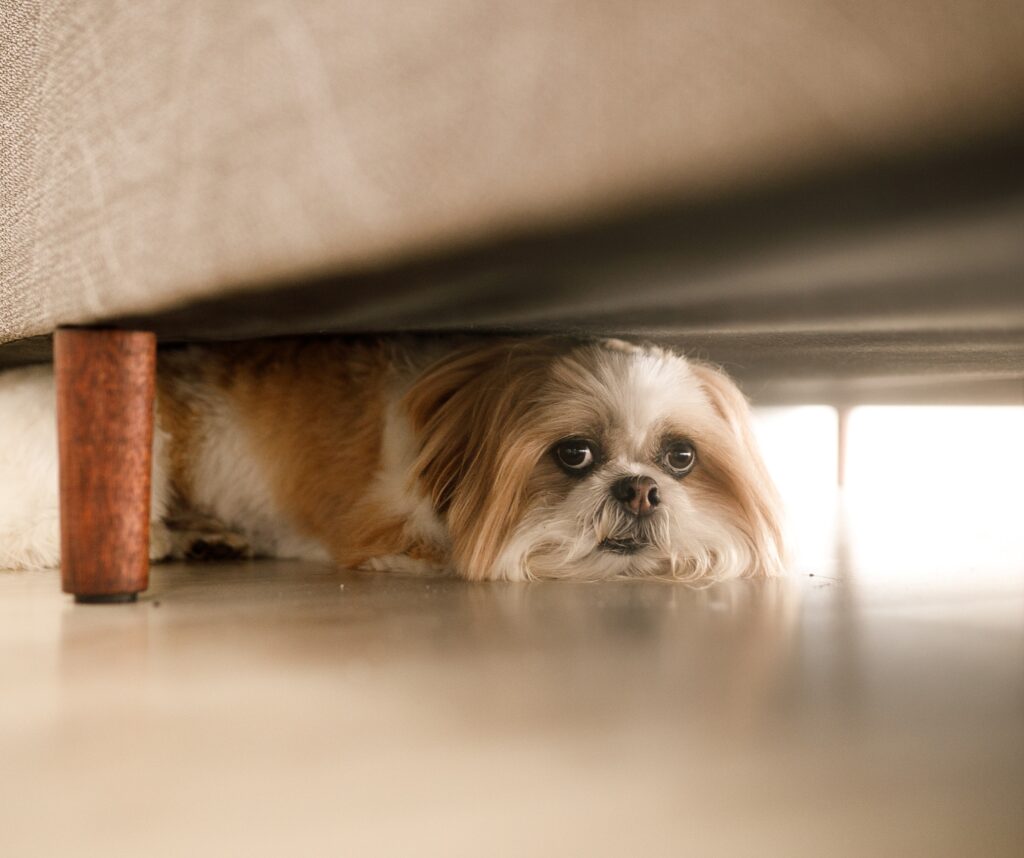
Approaching a dog in a small or confined space. Dogs may feel constrained and experience fear when approached in areas such as under a bed or table or in a crate. Additionally, a dog can feel fearful in narrow spaces like hallways, between furniture or enclosed footpaths. Such areas may induce feelings of intimidation and hinder the dog’s ability to avoid confrontation. Approach dogs with care and consideration for their emotional and physical space, allowing them to feel secure and comfortable.
More subtle yet also common situations that can cause dogs to become fearful and aggressive
Dogs may react fearfully to people who look or act differently, as well as those who wear clothes or carry items that modify their appearance or silhouette (such as hats, large coats, hi-viz coats or sunglasses) or appear and behave in unusual ways (such as crouching, leaning towards them, extending their hand, limping/using a walking aid, jumping or dancing).
Fast, sudden, or unexpected movements and sounds can trigger fear or fear aggression in some individuals. This includes people who move quickly or unexpectedly, such as visitors standing up, joggers, or skateboarders, and those who make loud noises like cheering. Additionally, objects that make sudden movements or sounds, like bin lorries, lawnmowers, and vacuum cleaners,s can also cause fear or fear aggression.
If a dog has had a previous negative experience, such as at a veterinary practice or at a grooming appointment, it may cause fear and anxiety when visiting similar environments or situations.
Dogs can show fear or aggression due to various reasons such as genetics, pain, hormonal imbalances, neurological issues, or lack of socialisation. If you are concerned about your dog’s behaviour, it is crucial to seek veterinary advice initially. By careful diagnosis, they can either refer you to a behaviour specialist or help you resolve the underlying medical issue.
Previous experience can also contribute to fear aggression in dogs
Traumatic past experiences can create negative associations with specific situations. For instance, if another dog attacks a dog during a walk, it may start barking aggressively at every dog it sees on walks.
Dogs that suffer from fear aggression can develop the belief that growling or snapping can help them avoid scary situations such as nail trimming or visits to the vet. This can lead to a situation where the dog is more likely to growl or snap when their owner attempts to use nail clippers or when the vet tries to examine them.
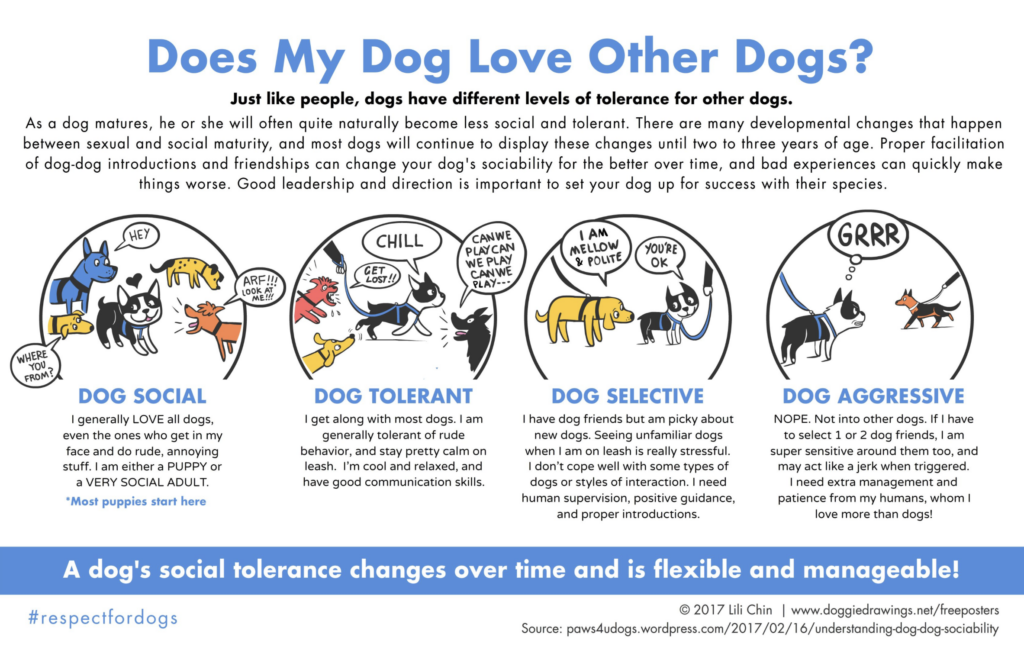
Punishing a dog for showing fear-aggressive behaviour or forcing them to submit to the experience will often worsen the dog’s fear of aggression. The best way to stop fear aggression is to alleviate the dog’s fear. With the help of a behaviour professional, you can use techniques such as desensitisation and counter-conditioning to improve the symptoms long-term.
It’s important to keep in mind that if your dog is showing any sudden changes in behaviour, especially aggression, there may be an underlying physical illness causing it. Therefore, before assuming that your dog’s behaviour is purely due to psychological reasons, it’s necessary to rule out or treat any physical illness that may be causing discomfort or pain.
Tips for Overcoming Fear Aggression in Dogs
Taking your dog to a veterinarian for a thorough check-up is always recommended if you notice any sudden changes in their behaviour.
It is essential to remain calm when dealing with an aggressive dog. Avoid punishing your dog when they display aggressive behaviour. Remember that dogs often become aggressive when they feel scared or threatened. Yelling, hitting, or physically restraining your dog can exacerbate their fear and worsen aggression.
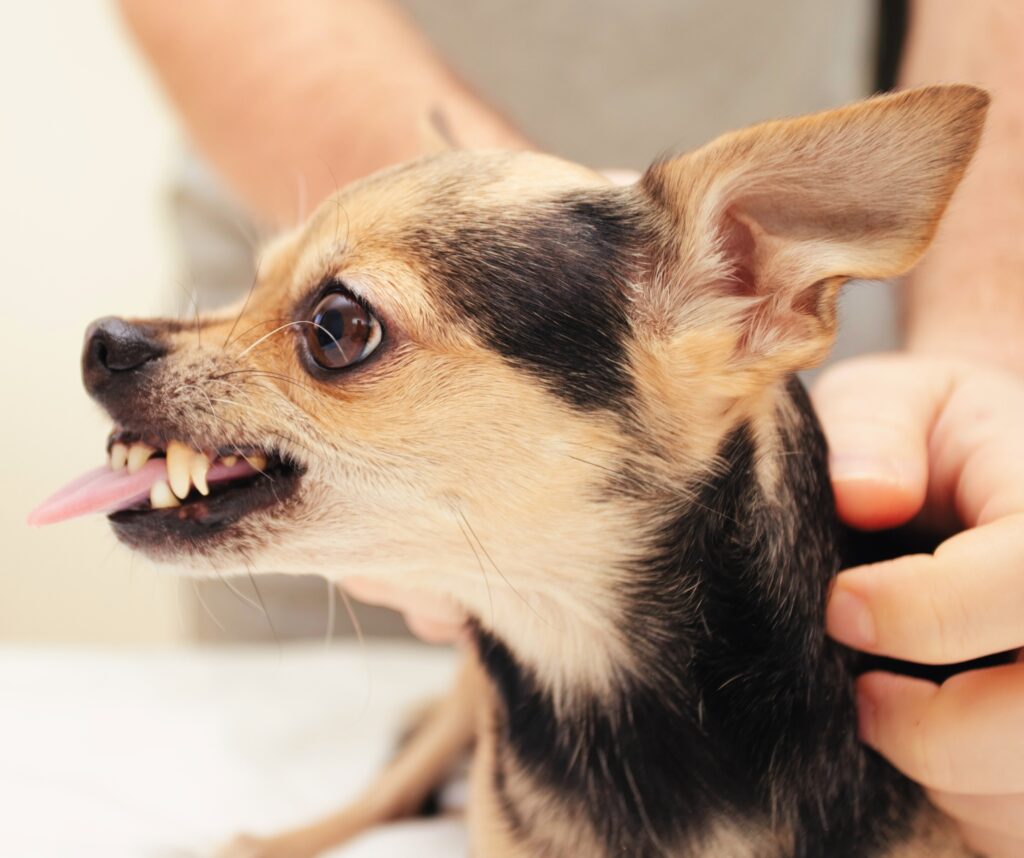
Before dogs show fear aggression, they give early warning signals. Observing these signs and responding immediately can prevent aggression.
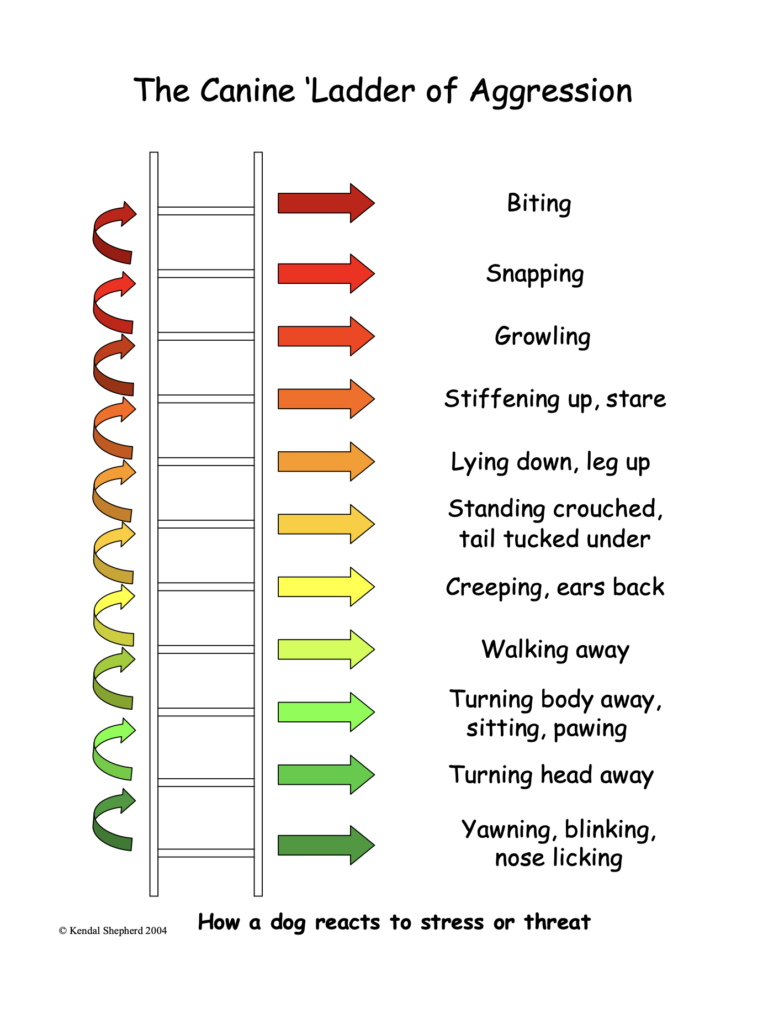
A barking, growling and lunging dog
If a dog is barking aggressively, snarling, growling, snapping, or lunging, it means that it has already reached its limit, which is commonly referred to as ‘threshold’. In such a situation, stopping interacting with the dog and leaving the area is advisable. It’s important to note that just because a dog has not yet bitten doesn’t mean it won’t escalate.
Signs of Fear Aggression in Dogs
Before aggressive behaviours occur, there are usually several signs that your dog is fearful. These can be subtle and often only be present for short periods of time, so it is important to familiarise yourself with signs of fear.
Dog body language associated with fear includes:
- Ears turned to the side or pinned to the back of the head
- Lip licking
- Panting
- Pacing
- Body tremors
- Direct eye contact or whale eyes (you can see the whites)
- Bristling hairs (piloerection)
- Avoidance behavior
- Vocalisations such as whining, barking, or growling
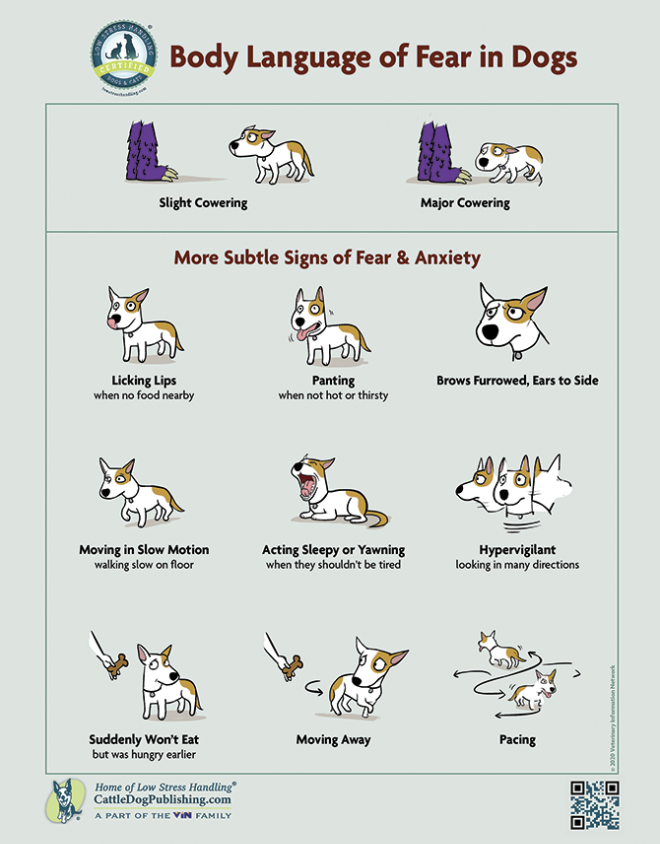
Body language. These cues can include a lowered or tucked tail, ears pulled back, wide eyes with large pupils (“whale eye”), wrinkled brow, tense face or body, a low, slow wagging tail, crouched positioning or making themselves small. Behaviours that may indicate fear can include tremors, panting, standing still, looking away, freezing (in fear), pacing or agitation.
Focus. A fearful dog might stare intently at the threat (hypervigilance) or avoid eye contact (darting glances).
Avoidance and disinterest. Fearful dogs might not take treats or participate in enjoyable activities like playing.
Displacement behaviours. These include lip licking, scratching furniture, scratching themselves, and licking or sniffing.
Remember, all behaviours are contextual!
Just because your dog licks their lips or shakes their body does not necessarily mean they are anxious. You need to assess what is happening around your dog at that moment, including the moments leading up to and after the event.
If you are unsure how to interpret fearful behaviour in your dog, consider seeking assistance from a dog behaviourist.
Disclaimer: The information provided in this blog is for informational purposes only. Read our full Disclaimer.





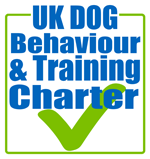


Comments are closed